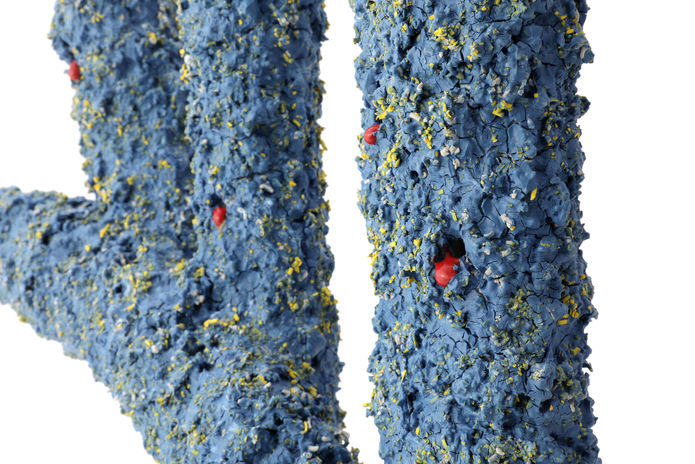
HAM Yeeyoung
About
Yeeyoung Ham smashes up the lump of clay into small chunks and piles them up again to create ceramic sculptures. This unique process began with her interest in the cycle of destruction and creation. She believes that there is something about the edge where destruction and creation coexist. The concept is seen commonly in today’s world - construction sites, for instance, where things are being demolished and wiped away within a very short time span, and a new building goes up.
Ham's works draw inspiration from the beauty found in imperfection and the process of creation from fragmentation. She seeks to unearth the aesthetics of non-stereotypical objects, inviting viewers to explore her creations that evoke raw inspiration and imagination.
함이영은 점토 덩어리를 부수고 다시 쌓아 올리는 과정을 통해 작업한다. 이러한 독특한 제작 과정은 파괴와 창조의 순환에 대한 관심으로부터 시작되었다. 작가는 파괴와 창조가 공존하는 가장자리에 무언가 있다고 믿는다. 이는 도시 환경에서 볼 수 있는 이미지를 나타내는데, 이는 작가에게 익숙했던 것들이 아주 짧은 시간에 철거되어 건물이 올라가는 공사장과 건설 현장 같은 곳이 이 그 예시가 될 수 있다.
작가의 작품은 불완전함에서 발견되는 아름다움과 독특한 창조 과정에서 받은 영감을 드러낸다. 작가는 작품을 통해 어떠한 고정관념에 기초하지 않은 것들의 존재를 발견하게 도와주며, 관람객들에게 정제되지 않은 영감과 상상을 불러일으키려 한다.

Recently, her creations were inspired by Ham's visit to a floating village named Kampong Phluk in Siem Reap, Cambodia. While a construction site symbolizes both creation and destruction, life in a floating village represents a delicate balance between freedom and constraint. Although water is inherently inhospitable to human habitation, it grants its inhabitants the freedom to move about. This juxtaposition creates an environment that is simultaneously unstable yet stable, showcasing the coexistence of opposing forces. The work reflects the understanding that nothing exists in isolation; rather, everything is interconnected, emphasizing the unity of dualities.
최근 함이영은 씨엠립에 위치한 수상촌(floating village)을 방문한 후에 영감을 받아 작품을 제작하고있다. 작가에게 건설 현장은 창조와 파괴의 현장을 상징하는 반면, 수상촌과 같은 물 위에서의 삶은 자유와 제한 사이의 균형으로 여겨진다. 물은 본질적으로 사람이 살 수 없는 환경이지만, 그곳에서 살아가는 사람들에게는 자유로운 이동을 허락한다. 이러한 대조는 동시에 불안정하지만 안정적으로 보인다. 결국 모든 것은 하나라는 측면에서 완전히 순수한 것은 없는 것을 반영하며, 모든 것이 서로 연결되어 있다는 점을 강조하여 이중성의 공존을 나타내고자 한다.








